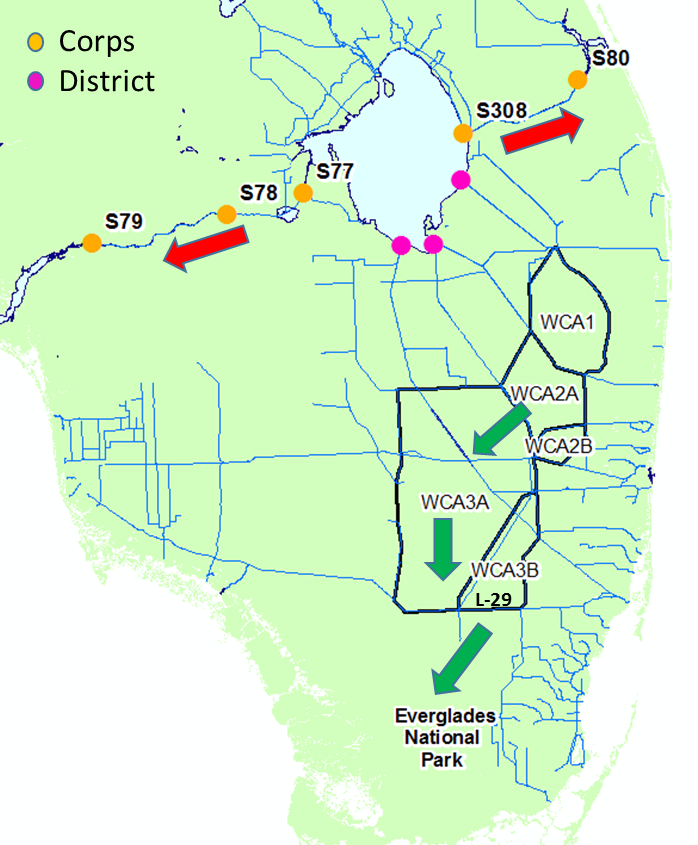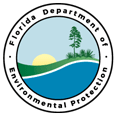|
FOR IMMEDIATE RELEASE: Feb. 16, 2016
CONTACT: DEP Press Office, 850.245.2112, DEPNews@dep.state.fl.us
DEP's Daily Update on Lake Okeechobee
In an effort to keep Floridians informed of the state’s efforts to protect the environment, wildlife and economies of the communities surrounding Lake Okeechobee and the Caloosahatchee and St. Lucie estuaries, the Florida Department of Environmental Protection will issue a Lake Okeechobee status update each weekday. These updates will help residents stay informed of the latest rainfall and lake level conditions, as well as the latest actions by the State of Florida and U.S. Army Corps of Engineers.
Summary of the State of Florida’s Actions:
Yesterday:
-
The U.S. Army Corps of Engineers agreed to Governor Scott’s request to raise water levels in the L-29 canal in order to move water south through Shark River Slough to ease the effects of flooding in the Everglades.
-
The South Florida Water Management District began operation of the S-333 structure at 5:30 p.m. on Feb. 15 after the state received an execution order from the
U.S. Army Corps of Engineers. The discharge rate is averaging 1,200 cubic feet per second, or 540,000 gallons per minute.
Last week:
- On Feb. 11, 2016, Governor Rick Scott requested that the U.S. Army Corps of Engineers take immediate action to relieve flooding of the Everglades Water Conservation Areas and the releases of water from Lake Okeechobee to the Caloosahatchee and St. Lucie estuaries. Click here to read the letter.
- The Governor requested that the Corps raise the level of the L-29 canal to
8.5 feet so that substantial volumes of water be moved from Water Conservation Area 3 to Everglades National Park through Shark River Slough.
- The Florida Department of Environmental Protection and the Florida Fish and Wildlife Conservation Commission issued orders on Feb. 11, 2016, that would allow the U.S. Army Corps of Engineers to move forward with this request. Click here to read the orders.
Lake Conditions:
|
Current Lake Level
|
16.19 feet
|
|
Historical Lake Level Average
|
14.57 feet
|
|
Total Inflow
|
6,300 cubic feet per second
|
|
Total Outflow
(by structures operated by the U.S. Army Corps of Engineers)
|
8,000 cubic feet per second
|
|
Net
|
(1,700) cubic feet per second
|
|
Lake level variation from a week ago
|
(.18) feet
|
Lake Okeechobee Management Information:
|

The figure above depicts various flood control structures that the U.S. Army Corps of Engineers (Corps) and the South Florida Water Management District (District) operate. The arrows illustrate the direction of water flow. The red color indicates that, as of
Feb. 16, 2016, the discharges from the structures operated by the Corps are at levels that lower salinity and impact the estuarine ecology. The green arrows show the movement of water from the water conservation areas into the L-29 canal at a protective amount for Everglades National Park. The District began this movement on Feb. 15, 2016, after receiving an execution order from the Corps at the request of Governor Scott.
|
|
Structures
(see map above)
|
Federal Release Guidance
(based on 2008 Lake Okeechobee Regulation Schedule)
|
Daily Average Releases
(as of 2/16/16)
|
|
South - 3 structures (operated by South Florida Water Management District)
|
0 CFS
|
0 CFS
|
|
East – S-308 (operated by U.S. Army Corps of Engineers)
|
N/A
|
4,450 CFS
|
|
East – S-80 (operated by U.S. Army Corps of Engineers)
|
Up to 2,800 CFS
|
5,390 CFS
|
|
West – S-77 (operated by U.S. Army Corps of Engineers)
|
Up to 6,500 CFS
|
7,850 CFS
|
|
West – S-79 (operated by U.S. Army Corps of Engineers)
|
N/A
|
7,850 CFS
|
The table above depicts the guidance for releases from the lake based on
the Corps' 2008 Lake Okeechobee Regulation Schedule as compared
to the actual daily average releases. |
Salinity Conditions:
Caloosahatchee Salinity Conditions: Salinity (based on optimal conditions for adult oysters) increased and are in the good range at Sanibel, within the fair range at Shell Point and in the poor range at Cape Coral.
St. Lucie Salinity Conditions: Salinity at the U.S. 1 bridge remains the same and continues to be in the poor range.
Rainfall Information:
In January 2016, South Florida experienced the wettest January on record since recordkeeping began in 1932. A total of 9.18 inches of rain fell across South Florida in January, which is 7.25 inches above average. In the past 24 hours, .826 inches of rain has fallen over Lake Okeechobee.
South Florida Water Management District Rainfall Forecast: Rainfall for the current week is forecast to be average, and the following week is forecast to be above average.
|



